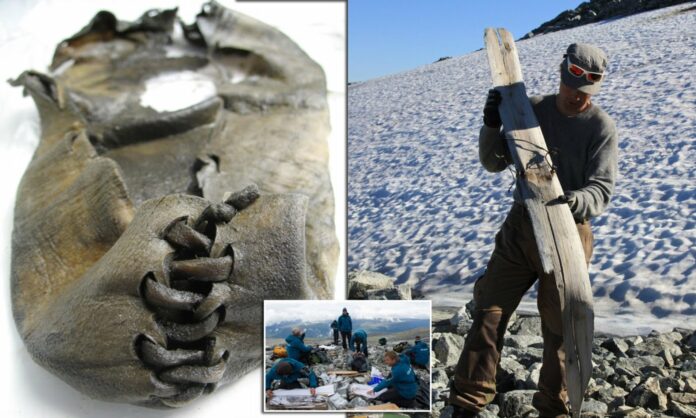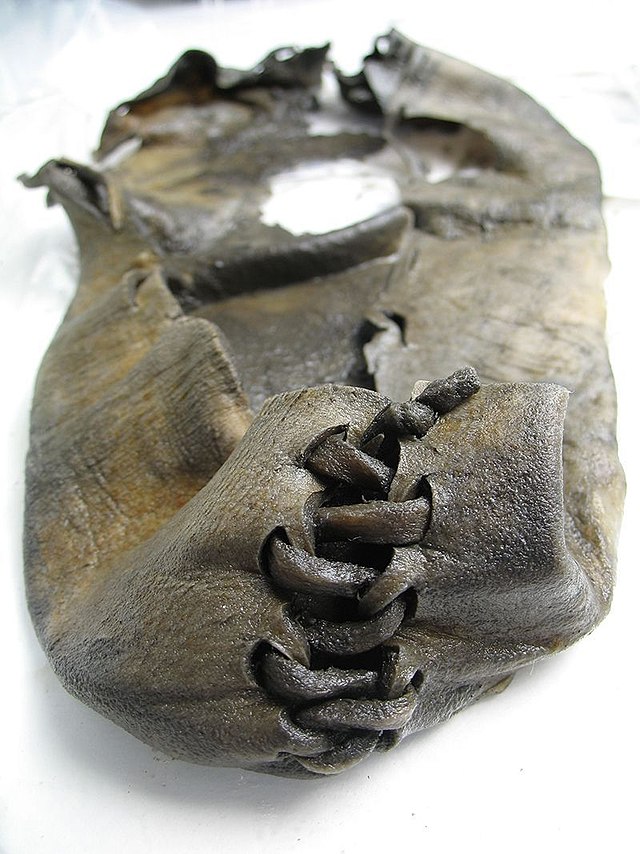The icy terrains of Norway have captivated archaeologists and historians for years, unveiling a trove of ancient artifacts that have remained intact for millennia within the country’s mountain ice patches. Among these extraordinary finds is the oldest shoe discovered in Norway—a 3,000-year-old bootie from the Bronze Age—which provides a fascinating insight into the lives and customs of the region’s early inhabitants. However, as climate change accelerates the melting of these ice patches, there is an urgent race to uncover and safeguard the myriad cultural treasures hidden beneath the swiftly vanishing ice.
Exceptional Preservation of Ice Patch Artifacts
In contrast to items buried in acidic soils or trapped under massive glaciers, artifacts retrieved from Norwegian ice patches are often found in outstanding condition, exhibiting minimal decay and distortion even after thousands of years of being frozen. This remarkable preservation is due to the stability of ice patches, which remain motionless and free from corrosive elements, creating an ideal environment for maintaining various materials, including weapons, garments, textiles, as well as plant and animal remains.

The 3,000-Year-Old Shoe: An Incredible Find
One of the most notable artifacts uncovered from Norway’s melting ice patches is the 3,000-year-old shoe, discovered in 2007 in the Jotunheimen mountain range in southern Norway. This small leather bootie, likely a size 4 or 5 in current U.S. measurements, probably belonged to a woman or young person and serves as a tangible connection to the Bronze Age hunting tribes that once traversed the area in search of reindeer. Alongside the shoe, researchers also found several arrows and a wooden spade, indicating that this site was a significant hunting ground for these ancient peoples. Dated to around 1100 B.C., this shoe not only holds the title of the oldest shoe in Norway but may also be the oldest piece of clothing discovered in Scandinavia.
The Impact of Climate Change
Despite these extraordinary discoveries, authors of the report caution that many other cultural artifacts may vanish before they can be recovered due to climate change. A 2022 report by the Norwegian Water Resources and Energy Directorate estimates that approximately 140 square miles (364 square kilometers) of ice patches—an area comparable to half the size of New York City—have melted since 2006. If artifacts are not retrieved from these patches soon after they are exposed, they face the risk of being lost, damaged, or destroyed irretrievably.
The Importance of a Comprehensive Monitoring Initiative
To address this looming threat, researchers propose establishing a national monitoring program for ice patches, utilizing remote sensors to systematically survey these areas and secure any objects that emerge from the melting ice. This proactive strategy would help preserve the invaluable cultural and historical information contained within these artifacts and ensure that the narratives of Norway’s ancient inhabitants endure for future generations.
Conclusion
The finding of the 3,000-year-old shoe and numerous other ancient artifacts uncovered from Norway’s melting ice patches highlights the incredible preservation potential of these frozen landscapes. However, with climate change accelerating the loss of these ice patches, it is vital to uncover and protect the many cultural treasures concealed beneath the rapidly receding ice. By initiating a comprehensive monitoring program and striving to recover these artifacts before they are lost, researchers can contribute to ensuring that the rich history and traditions of Norway’s ancient peoples are preserved for generations to come.

